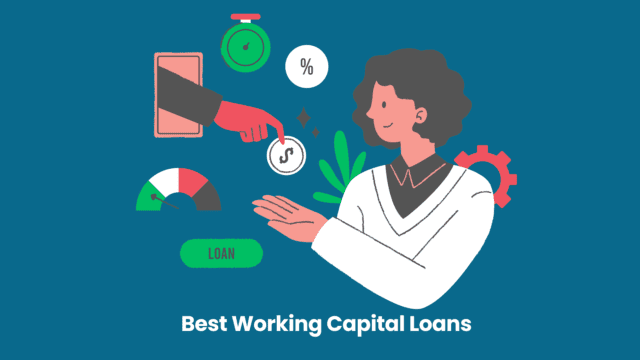Discover how to navigate the world of the best HCM platforms with our comprehensive guide. Learn about the key features, top contenders, and important factors to consider when choosing the perfect Human Capital Management (HCM) solution for your organization. Streamline HR processes and empower your employees today!
Finding Your Perfect Fit: Navigating the Best HCM Platforms
Let’s face it, managing human resources in today’s dynamic business environment is no small feat. There’s a lot to juggle from onboarding new hires to nurturing talent, handling payroll, and ensuring compliance. Thankfully, the world of technology offers a powerful solution: Human Capital Management (HCM) platforms. These digital powerhouses are designed to streamline your HR processes, boost efficiency, and ultimately, empower your employees.
But with so many options available, choosing the right HCM platform can feel like navigating a maze. That’s where we come in! This guide is designed to be your friendly companion, helping you understand the landscape of best hcm platforms and find the perfect fit for your organization.
Think of an HCM platform as the central nervous system for your HR department. It connects various HR functions, making information readily accessible and processes more efficient. Investing in the right platform can significantly impact your company’s bottom line and employee satisfaction.
Best Human Capital Management (HCM) platforms
So, what should you be looking for in the top hcm platforms? Let’s explore some key features:
- Core HR Functionality: At its heart, an HCM platform should handle the essentials, such as employee records, organizational charts, time and attendance tracking, and absence management.
- Payroll Processing: Accurate and timely payroll is crucial. Look for platforms that offer robust payroll features, including tax calculations and direct deposit options.
- Talent Management: This encompasses recruitment, onboarding, performance management, learning and development, and succession planning. A strong talent management module can help you attract, retain, and develop top talent.
- Benefits Administration: Managing employee benefits can be complex. A good HCM platform will simplify enrollment, track eligibility, and integrate with insurance providers.
- Analytics and Reporting: Data is king! Look for platforms that offer robust reporting and analytics capabilities, allowing you to track key HR metrics and make data-driven decisions.
- Employee Self-Service: Empowering employees to access their information, update details, and request time off saves HR valuable time and increases employee satisfaction.
- Compliance Management: Staying compliant with labor laws and regulations is essential. The best platforms will help you navigate these complexities.
- Integration Capabilities: Your HCM platform shouldn’t exist in isolation. Seamless integration with other business systems like accounting software and CRM is crucial.
Now that we know what to look for, let’s delve into some of the top contenders in the world of best hcm platforms. Remember, the “best” platform for you will depend on your specific needs, company size, and budget.
A Closer Look at Leading HCM Platforms
| Platform | Key Strengths | Ideal For | Considerations |
|---|---|---|---|
| Workday | Comprehensive suite, strong analytics, robust talent management, highly scalable. | Large enterprises with complex needs and a focus on data-driven decision-making. | Can be expensive and require significant implementation effort. |
| SAP SuccessFactors | Global reach, broad functionality, strong compliance features, and extensive integration options. | Multinational corporations and organizations with stringent regulatory requirements. | Can be complex to navigate and may have a steeper learning curve. |
| Oracle HCM Cloud | Comprehensive solution, strong cloud infrastructure, integrated with other Oracle applications. | A comprehensive solution, strong cloud infrastructure, integrated with other Oracle applications. | Can be expensive and may require experienced consultants for implementation. |
| ADP Workforce Now | User-friendly interface, robust payroll processing, strong customer support, suitable for various sizes. | Small to medium-sized businesses looking for a comprehensive and reliable solution. | Some advanced features may require add-ons. |
| BambooHR | Excellent user experience, easy implementation, strong focus on employee experience, great for SMBs. | Small to medium-sized businesses prioritizing ease of use and employee satisfaction. | May lack some of the advanced features of enterprise-level platforms. |
| Rippling | The pricing structure can become complex with added modules. | Fast-growing startups and businesses looking for a modern and integrated solution. | Organizations are already heavily invested in the Oracle ecosystem. |
| Paylocity | Strong focus on payroll and tax compliance, good customer service, mobile-friendly. | Unified platform for HR, IT, and Finance, automation capabilities, and streamlined onboarding. | May not have the most extensive talent management features compared to others. |
Choosing the Right Path: Factors to Consider
Selecting the perfect HCM platform isn’t about picking the most popular option; it’s about finding the one that aligns with your specific organizational needs. Here are some crucial factors to consider as you navigate your choices:
- Your Company Size and Structure: A small startup will have different needs than a large multinational corporation. Consider the scalability of the platform.
- Your Budget: HCM platforms come with varying pricing models. Factor in implementation costs, ongoing subscription fees, and potential costs for add-ons.
- Your Specific Needs and Priorities: What are your biggest HR challenges? Is payroll accuracy your top priority, or are you focused on enhancing talent development? Identify your critical needs.
- Ease of Use and Implementation: Consider how user-friendly the platform is for both HR administrators and employees. A smooth implementation process is crucial.
- Integration with Existing Systems: Ensure the platform can seamlessly integrate with your current software, such as payroll systems, accounting software, and benefits providers.
- Security and Compliance: Protecting employee data is paramount. Research the platform’s security measures and compliance certifications.
- Vendor Support and Customer Service: Reliable customer support is essential, especially during implementation and when troubleshooting issues.
- Future Growth and Scalability: Will the platform be able to grow with your organization as your needs evolve?
Making the Most of Your HCM Platform
Once you’ve chosen and implemented your new HCM platform, the journey doesn’t end there. To truly reap the benefits, consider these best practices:
- Invest in Thorough Training: Ensure both HR staff and employees receive comprehensive training on how to use the platform effectively.
- Customize the Platform to Your Needs: Most platforms offer customization options. Tailor the settings and workflows to align with your specific processes.
- Promote Employee Self-Service: Encourage employees to utilize the self-service features to access information and manage their data.
- Regularly Review and Optimize: As your business evolves, periodically review your HCM platform to ensure it continues to meet your needs. Explore new features and functionalities.
- Leverage Data and Analytics: Use the platform’s reporting capabilities to gain insights into your workforce and make data-driven decisions.
In Conclusion
Investing in one of the best hcm platforms can be a game-changer for your organization. It streamlines HR processes, improves efficiency, empowers employees, and provides valuable insights. By carefully considering your needs, evaluating the available options, and implementing the platform effectively, you can transform your HR department from a primarily administrative function to a strategic partner in your company’s success. Take your time, do your research, and find the perfect fit that will help you unlock the full potential of your human capital. Good luck on your journey to finding the ideal HCM solution!



















